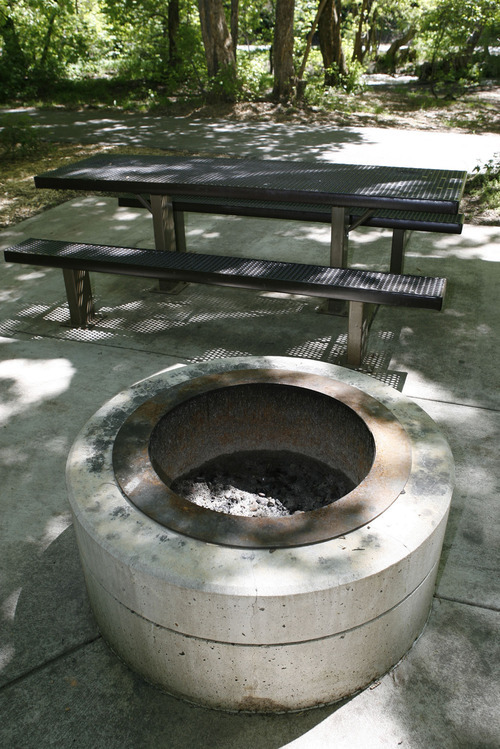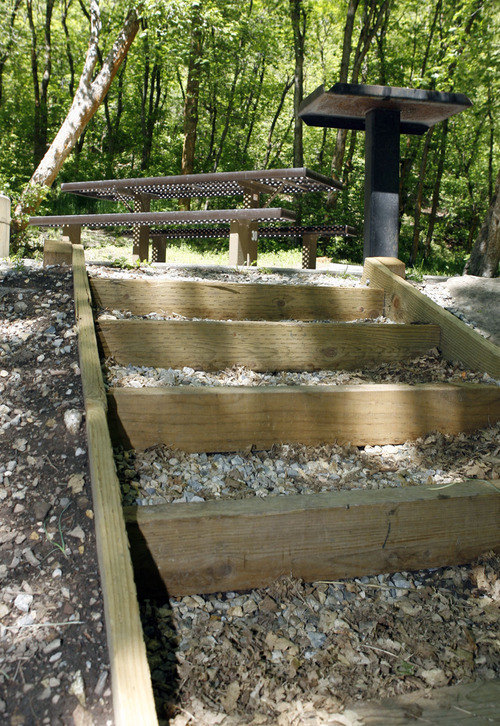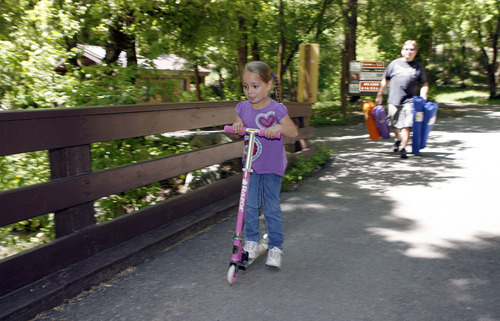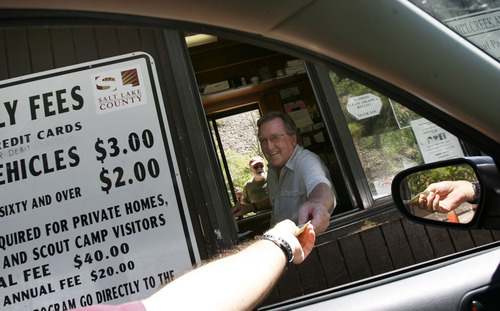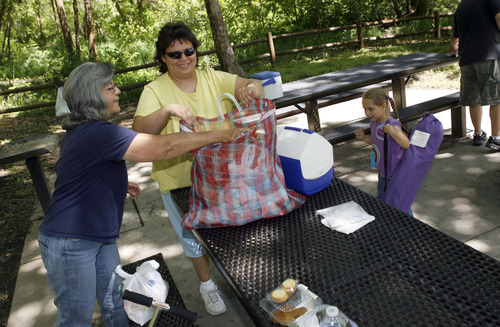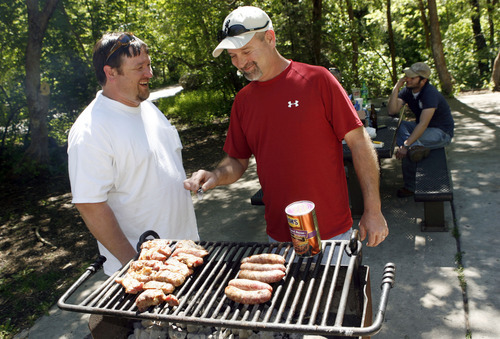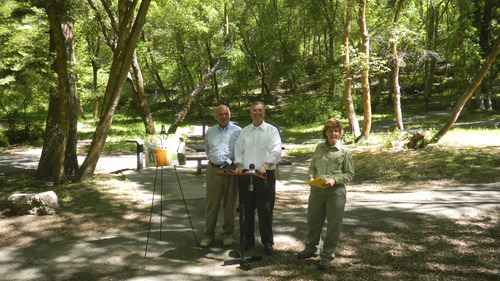This is an archived article that was published on sltrib.com in 2011, and information in the article may be outdated. It is provided only for personal research purposes and may not be reprinted.
Twenty years ago, Mill Creek Canyon suffered from too much use and too little care. Stream banks were barren, Civilian Conservation Corps-era facilities were crumbling and law enforcement problems were increasing.
That is when Salt Lake County and the U.S. Forest Service created an unusual partnership in which the county collected fees that were used to build new facilities, maintain trails and improve law enforcement. County and Forest Service officials joined together Tuesday to celebrate a partnership that has collected more than $4.8 million in fees since it began in May 1991.
With the exception of the $50,000 needed each year to operate the fee booth near the bottom of the canyon, that money has gone toward maintaining and improving Mill Creek Canyon, an urban forest that hosts 500,000 visitors a year. The per vehicle fee is $3, but a $40 annual pass is available.
"This is everybody's backyard," said U.S. Forest Service spokeswoman Loyal Clark about the canyon that hosts about 1,400 vehicles, 400 bicyclists and dozens of Boy and Cub Scouts nearly every day. "This is the people's canyon."
Salt Lake County Councilman Jim Bradley, who spoke at a small ceremony marking the 20th anniversary of the fee program, was a member of the old county commission that launched the program.
"It was in bad shape," recalled Bradley. "I went to the canyon and asked people if they would be willing to be charged a fee if we put the money back into the canyon. Eighty percent of those I talked to said they would be delighted."
Some did oppose the program, which started before federal fee programs such as the ones at Flaming Gorge, Mirror Lake and American Fork Canyon. Opponents argued that because they already paid taxes, why should they pay again to use public land?
Within two years, much of the stream bank was rehabilitated through the use of boulders, closures and plants. The Sheriff's Office reported a decline of 42 percent in disruptive or violent behavior in the canyon. New restrooms were built and popular picnic areas were repaved and restored. Parking lots were rebuilt. In the winter, cross-country ski trails were groomed.
According to the Forest Service's Carol Majeske, the next big project in the canyon will be a $220,000 transportation study that will examine what to do about congestion and parking issues in the canyon and could look at the feasibility of adding at least one bicycle lane to the main road.
Steve Brown, Mill Creek Canyon project manager, said money collected from canyon visitors supports 11 seasonal employees and two volunteers who clean the canyon, install signs, maintain trails and contact visitors.
Cathy Kahlow called the fee program partnership with Salt Lake County an effort to do the right thing for the canyon and the community.
"It meets the highest standard of public service," said the district ranger.
Corroon praised the improvements that have been made in the past 20 years. He called Mill Creek Canyon one of Salt Lake County's "crown jewels."



